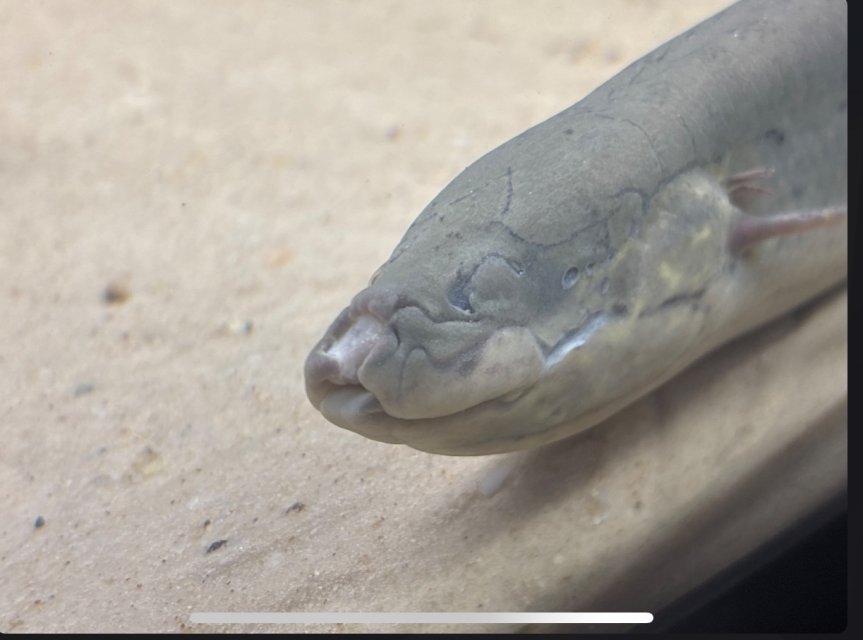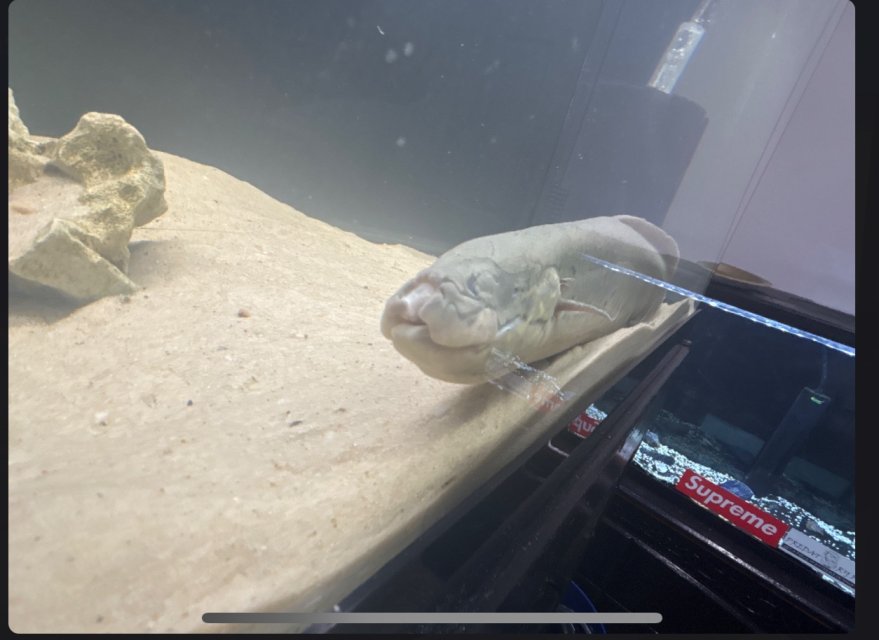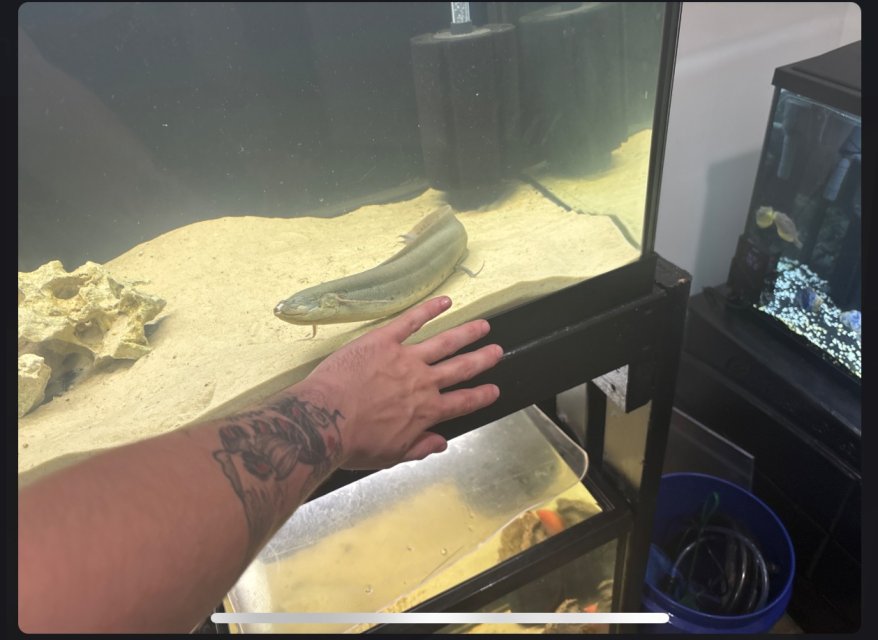- Have you tested your water?
- Yes
- If yes, what is your ammonia?
- 0ppm
- If yes, what is your nitrite?
- 0ppm
- If yes, what is your nitrate?
- I’m guessing around 10-15ppm
- If I did not test my water...
- ...I recognize that I will likely be asked to do a test, and that water tests are critical for solving freshwater health problems.
- Do you do water changes?
- Yes
- What percentage of water do you change?
- 71-80%
- How frequently do you change your water?
- Every week
- If I do not change my water...
- ...I recognize that I will likely be recommended to do a water change, and water changes are critical for preventing future freshwater health problems.
my African lungfish I got about nine months ago was very injured when I got him missing pieces of his tail legs and I I was able to heal him up all except for a very small dot on the tip of his nose that has done nothing but grow for the past eight months that I’ve had him
I have tested my water. Water quality is good and just cloudy because I just fed a good helping of silversides if anyone has any advice, please get back to me. He doesn’t seem to be an healthy or anything. He eats just fine and gets along with all the other fish just great.


I have tested my water. Water quality is good and just cloudy because I just fed a good helping of silversides if anyone has any advice, please get back to me. He doesn’t seem to be an healthy or anything. He eats just fine and gets along with all the other fish just great.





